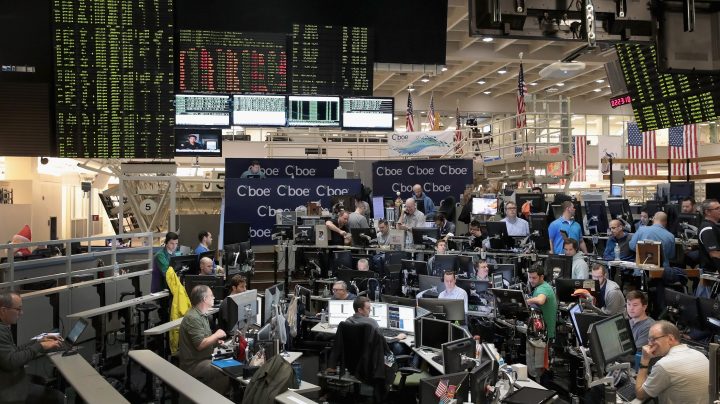
How can investors keep an eye on future market volatility?
How can investors keep an eye on future market volatility?

If there’s one word that defines the investment markets these days, it is “volatility.”
Wall Street traders who want to estimate future market volatility often look to the Cboe Volatility Index. It’s known as the VIX for short.
While many of us keep an eye on major stock indexes, Vanderbilt’s Robert Whaley also tracks the VIX, sometimes called the “fear gauge.”
“I watch it every day,” he said. “It tells me how worried I should be about my pension funds and my ability to retire at some point in the future.”
Whaley developed the VIX. He said he came up with the formula after analyzing all the S&P index option prices ever recorded on the Chicago Board Options Exchange, Cboe’s former name.
That was three decades ago, and the VIX is still relevant, he said.
“I think it’s an accurate reflection of how people are feeling because that number is computed using real dollars,” Whaley said.
Dollars that investors are paying to insure against downside risk in the stock market, and the VIX measures that.
“Suppose that the VIX was 20 yesterday and is 24 today,” Whaley said. “That means the cost of stock portfolio insurance rose by 20% over a single day.”
Investors pay more if they’re worried.
“The amount you’re willing to pay for insurance is directly dependent upon what you believe is going to happen in the future,” he said.
Five years ago, the VIX made news for not moving much, said Luke Kawa of UBS.
“In 2017, for instance, when market volatility was quite low for a long time, the VIX was quite low for a very long time,” Kawa said.
Volatility came roaring back in early 2018.
Fast forward to these last few months. The VIX is moving a lot, again, at levels that are considered relatively high.
“What the VIX is saying right now is that, ‘Hey, we’re not in a risk event, but we’re in a bit of an economic macro malaise,'” Kawa said.
But the VIX has its limits, said RSM’s Joe Brusuelas.
“It doesn’t tell us a lot about where valuations are going or really much about the economy,” he said.
An economy that right now is rife with uncertainty.
There’s a lot happening in the world. Through it all, Marketplace is here for you.
You rely on Marketplace to break down the world’s events and tell you how it affects you in a fact-based, approachable way. We rely on your financial support to keep making that possible.
Your donation today powers the independent journalism that you rely on. For just $5/month, you can help sustain Marketplace so we can keep reporting on the things that matter to you.

















